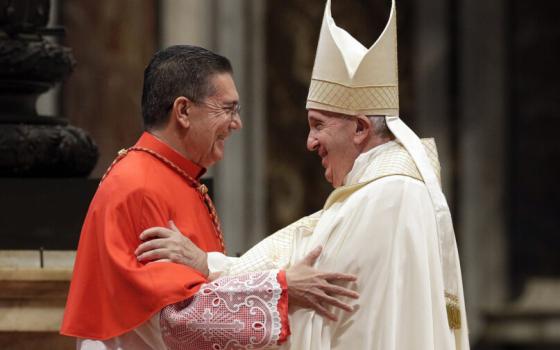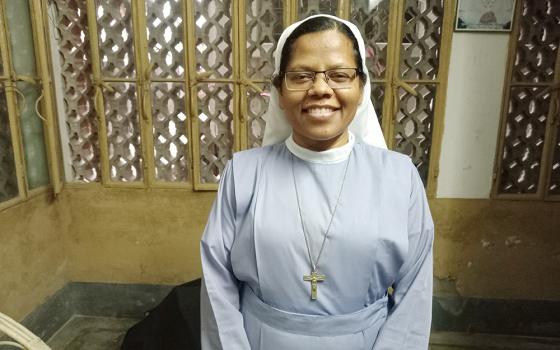Yesterday, we began looking at Louis Cameli’s Catholic Teaching on Homosexuality: New Paths to Understanding. If you did not read that post, you can do so by clicking here. Today I will conclude my review of Cameli’s outstanding book.
Cameli comes to what many understand to be the bridge that cannot be crossed when it comes to Church teaching: the designation “objective disorder” found in the 1986 Letter to the Bishops of the Catholic Church on the Pastoral Care of Homosexual Persons, from the Congregation for the Doctrine of the Faith. Cameli observes that the wording deserves “very close analysis, because they have exercised a toxic effect on people of good will and who have heard themselves so described. The contemporary English usage of these words and the technical-philosophical-Latinate usage are very much at variance. This variance does damage to communication and often renders Church teaching as ‘unreceivable.’” He rightly notes that in common usage, “disordered” means “crazed or deranged” whereas in classic Catholic theology, it means more simply that it cannot achieve the purposeful, or “final” cause of sexual activity, the procreation of children.
Also important is Cameli’s treatment of homosexual inclination, as opposed to acts, in the 1986 Letter from CDF, which stated, “Although the particular inclination of the homosexual person is not a sin, it is a more or less strong tendency ordered toward an intrinsic moral evil’ and thus the inclination itself must be seen as an objective disorder.” Here he notes the similarity with the Catholic Catechism’s treatment of concupiscence: “Etymologically, ‘concupiscence’ can refer to any intense form of human desire. Christian theology has given it a particular meaning: the movement of the sensitive appetite contrary to the operation of human reason…It unsettles man’s moral faculties and, without being in itself an offense, inclines man to commit sins.” This linkage, like Cameli’s point about the divergent common and precise meanings of the words “objective disorder,” should be more widely discussed for it is clear the failure to grasp these important contexts for the Church teaching not only is experienced as hurtful, even rejectionist, by gay Catholics, but I have heard plenty of folk defend traditional marriage by abusing these terms or neglecting to see the way homosexual inclination is akin to concupiscence. These latter opponents of anything that might make life in the Church more palatable for gay Catholics should be challenged on these grounds. If concupiscence is like ice cream, and the homosexual inclination is like chocolate ice cream, it is important to point out that eating chocolate or vanilla ice cream before bedtime will make you fat.
I wish I had known Cameli in 1986 when the Letter from CDF came out. I wish he had been on the airwaves to explain the Letter. Cameli does not point out on thing in this section on the 1986 Letter that bears attention: the date! 1986 was ten years before Bill Clinton signed the Defense of Marriage Act. That is to say, I cannot think of any social issue upon which attitudes have changed more quickly than the issue of gays in society. 1986 was also only a little more than ten years after the American Psychological Association removed homosexuality from its list of psychological diseases. There are two reasons to recall the date, first because no one should be held accountable for having changed their views more recently, and second, because we need to remember that the Church moves slowly and needs to move slowly. (That is another discussion.)
Cameli poses the question: Is gay sexuality a blessing or a curse? Does it share in human sexuality, which the Church teaches is a blessing, sufficiently that the differences from heterosexuality do not tip the scales to the “curse” side? In what ways are they similar and in what ways different? Certainly, limiting the idea of sexuality to what can be done with one’s genitalia is not a Catholic concept. Cameli turns to the heart of his book in which he explores the Catholic anthropology of human sexuality and discerns three core components for a blessed Christian sexuality: connecting, claiming and being claimed, and giving life. He looks at each of these different forms of sexual expression and discerns ways that gays and lesbians can achieve them in ways that do no violence to Christian tradition.
I do not want to give away the whole book– something my reviews have been accused of in the past – but I will say this. Cameli does not come down in favor of gay marriage, or opposed to some recognition of gay relationships, their need for security, etc. I get the feeling that, as a pastor, he is accustomed to getting it from both sides, and so he expresses his views without pushing them to their political conclusions. That is for us, the laity, to decide. Cameli’s treatment of the ways gay men and women can be “procreative” in an analogical way, was very compelling and I wonder if it would cause the CDF to reconsider its prior decision not to permit Catholic adoption agencies to place children in the homes of gay parents. It should.
For those who think you can toss out two thousand years of tradition as easily as you choose which team to cheer for in the World Series, this book will not satisfy. They will not share Cameli’s astute observation that our tradition is determinative. For many, it will be too little, too late. They have moved past these careful distinctions and thoughtful readings, and achieved ideological certainty. For others, this book’s attempt at understanding will be seen as failing to grasp the stakes in what they perceive as a civilizational struggle against the desire of gay men and women to lead normal lives. They will feel betrayed by Cameli’s searchings for a more compassionate, and more truly traditional, approach to the issues raised in this book.
But, the Church’s pastors should consult this book and digest its discussions of these difficult and neuralgic issues in our culture. The role of gay men and women in society is certainly not going away, not here in the West, not in the developing nations of the Global South. Cameli has offered something that, frankly, official Church teaching has so far not really offered, a chance for gay Catholics to find a true liberation not in the cultural zeitgeist, but that in a life of authentic fidelity to the Church’s teaching. Such authentic fidelity is itself a type of liberation, indeed the only real sense of liberation for a Catholic. Cameli has provided a perspective and an initial discussion that could prove enormously fruitful in the years ahead. Tolle, lege.



